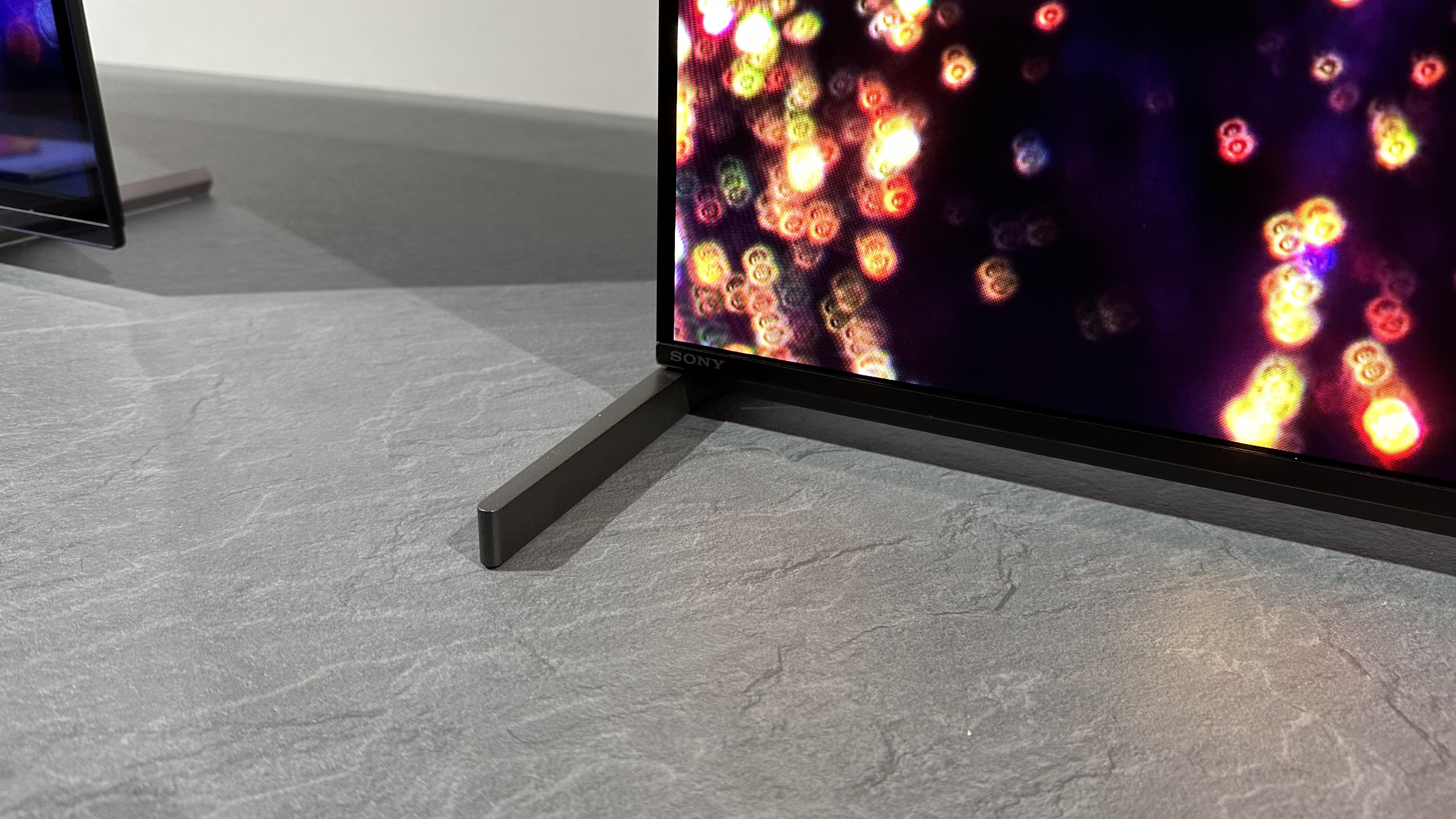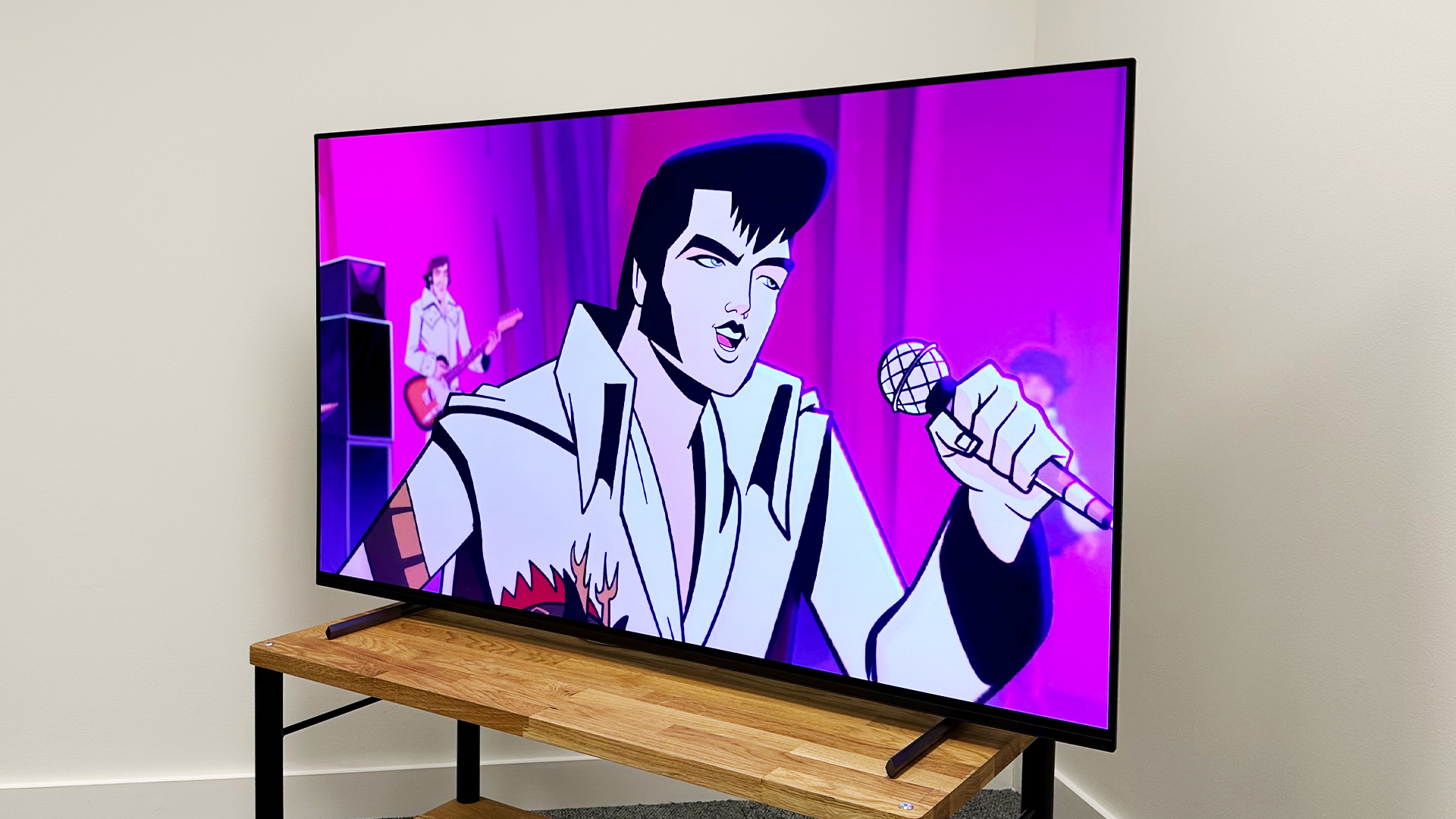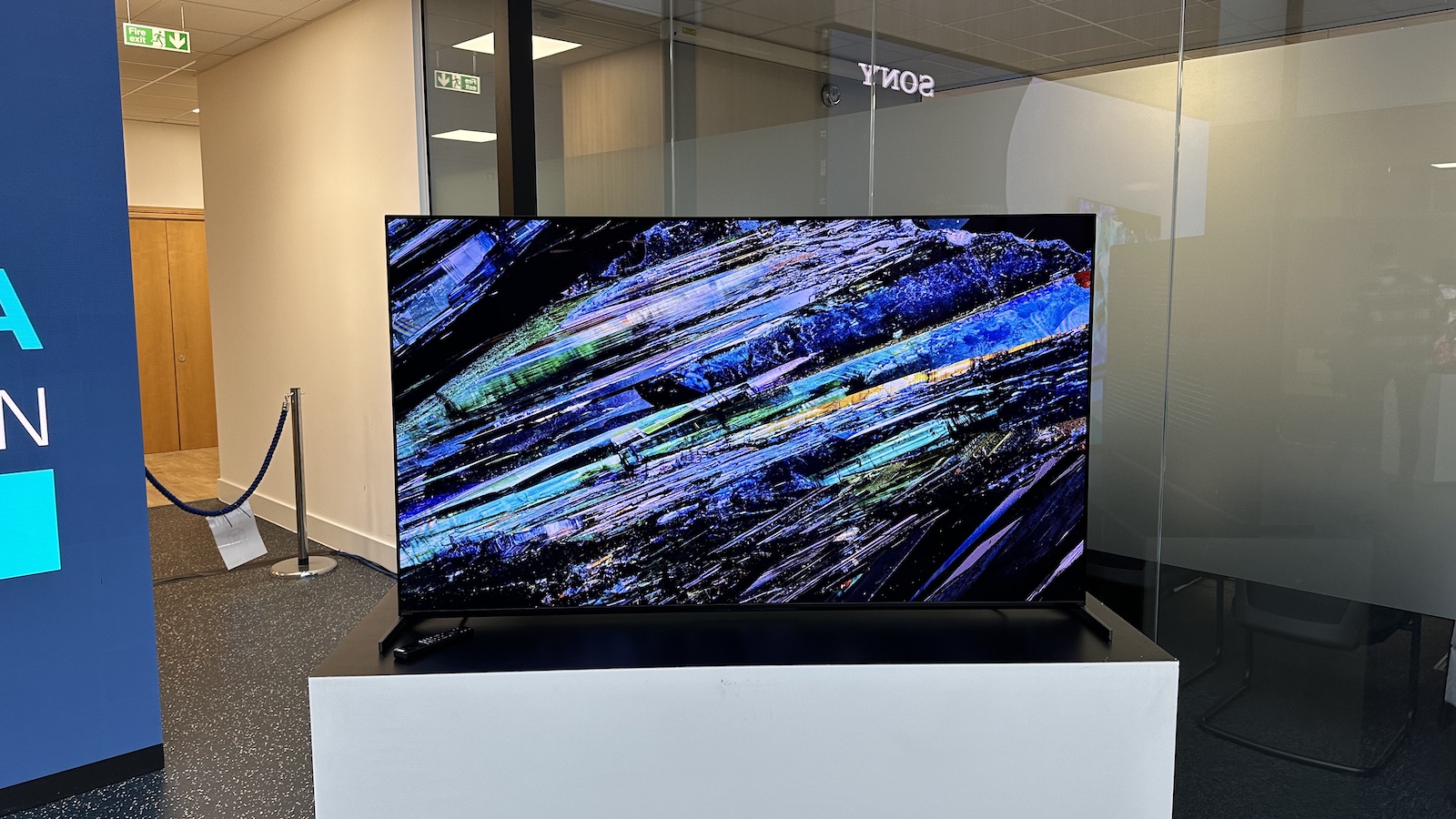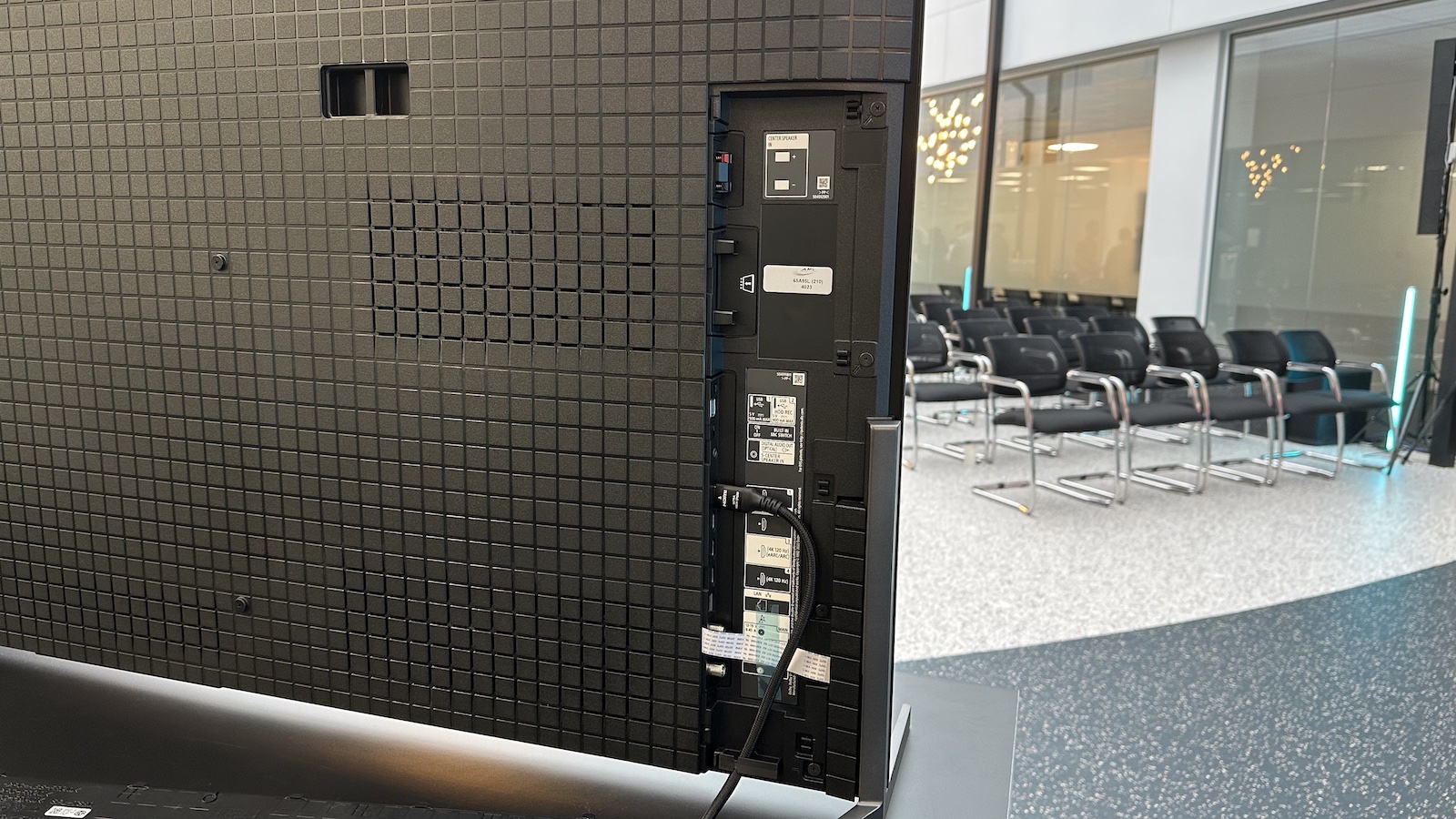Sony A80L vs A95L: which Sony OLED TV is for you?
The step-down takes on the range-topper

Here we're comparing the step-down OLED model, the A80L, with the range-topping A95L. Should you remortgage in order to get your mitts on the A95L? Or will the A80L suit you just fine? Let's find out.
Sony A80L vs A95L: price
Of course we would expect the A95L to be pricier than the A80L, given the specs. But we didn't expect it to be this much more expensive.
Because in the UK at least, the A95L is priced higher than its predecessor, the A95K. In the US, it's cheaper, and in Australia, pricing is still TBC. The A95L also comes in a 77-inch model, which the A95K didn't. But the A80L goes all the way up to 83 inches.
Here's how the A80L and A95L compare.
Size | A80L | A95L |
|---|---|---|
55 | £2399 / $1900 / AU$2995 | £2999 / $2800 / AU$TBC |
65 | £2999 / $2600 / AU$3995 | £3699 / $3500 / AU$TBC |
77 | £4499 / $3600 / AU$6495 | £5999 / $5000 / AU$TBC |
83 | £5499 / $5500/ AU$8795 | N/A |
Sony A80L vs A95L: design

The A95L's predecessor, the A95K, featured an innovative stand that could be positioned either in front of or behind the TV – with the former arrangement, you could sit the telly flush to the wall, and with the latter, it was out of sight and out of mind. But this stand was heavy, which made both delivery and setup a pain, which might be why Sony has scrapped it for the A95L in favour of simpler, lighter feet that aren't unlike those of the A80L.
However, all sizes of the A80L feature feet that can be positioned at the edges of the TV to make it more stable, or closer together to fit on a narrower piece of furniture. The 77-inch A95L has the same option, but with the 55- and 65-inch models, the feet can only be positioned right at the TV's extremities, which will limit the number of TV cabinets it can be used with. Shame.
But like the A80L, the A95L's feet can be positioned with the TV raised a couple of inches to accommodate a soundbar.
Both TVs are slim, though because of the screen-housed sound system (and the A95L's heatsink), they're not the slimmest around.
One quirk of the A95L is that the screen looks grey when turned off, rather than black. That's due to its anti-reflective coating. It's only noticeable when the set is off and the lights are on, and it's no big deal, especially given the gains it brings to the picture quality.
Sony A80L vs A95L: features

So if the two sets look quite similar, what are the differences between them? The big one is the screen.
The A95L features a QD-OLED screen, which combines OLED technology with Samsung's Quantum Dot tech. This aims to combine the absolute black levels of OLED with more vibrant colours and a higher peak brightness than standard OLED alone can achieve. The A95L is a second-gen QD-OLED display – Sony claims it's capable of a peak brightness that's up to twice as much as that of 2022's A95K.
It also boasts its own heat diffusion sheet (aka a heatsink) and bespoke thermal analysis via the set’s Cognitive Processor XR. Like the A80L, the A95L's Cognitive Processor XR offers a new feature called XR Clear Image, which cleans up source material for more accurate 4K upscaling.
The A95L has the same new Game Menu feature as the A80L, which brings together all the gaming-specific modes so you can switch them on or off and tweak them. On the A95L, though, this Game Menu has extra features, most notably one that allows you to reduce the size of the gaming screen for window-in-window-style gaming (a smaller gaming window means less eye movement and faster response times for competitive gamers). The A95L is also the only one of Sony's new TV range to support Dolby Vision gaming (though not at launch, but to be added later via an update), and the only one to get Multi View, which lets you split the screen in two so you can game on one side and follow a gaming tutorial on YouTube on the other.
Both it and the A80L support 4K/120Hz gaming, VRR and ALLM, so gamers are broadly well-catered for, but they both still have just two HDMI 2.1 sockets despite the likes of LG and Samsung offering four on their top TVs for years now.
With one of the 2.1 sockets being the eARC for a soundbar, that leaves only one fully-specced port for a PS5, Xbox Series X or PC. That's fine for most people, but if you have more than one games console on the go, it's nice not to have to unplug one in order to use another.
The A95L is the only of Sony's TVs to come with the Bravia CAM accessory (it's an optional extra for its other TVs). This clips to the TV's top edge and unlocks a host of smart features, including video calling, automatic power saving and picture and sound optimisation based on the specific spot in the room that you're sitting in.
Both TVs run the Google TV operating systems, with all the usual streaming suspects onboard: Prime Video, Disney+, iPlayer, Apple TV and Netflix (though the latter's content still doesn't show up in the recommendations, which is a major oversight). All the streaming apps deliver sound and video in the formats that they should too, including Disney+ in Dolby Atmos, which has been missing from the last couple of generations of Sony TVs.
Both TVs support Dolby Vision HDR alongside the more common HDR10 and HLG formats, though HDR10+ is lacking. And both have the Sony Bravia Core app, which streams films in higher quality than rival services.
Both also have Sony's Acoustic Surface Audio+ sound system, which uses actuators placed behind the screen to make sound come from the exact part of the picture.
Sony A80L vs A95L: picture

Now, we haven't tested the A95L, so can't comment conclusively on its picture quality. But we did go hands-on with it at the launch event in March, and then again during a more in-depth session in August. So we have a pretty good idea of how it will perform.
How did it look? In a word, awesome. Sony provided a range of TVs to use as comparison, as well as a BVM-HX310 pro-level mastering monitor as reference. The A95L looked comfortably better than the competition, and came as close to the mastering monitor as we have ever seen.
The Vivid picture mode isn't something you'd want to use at home – it's too cool and blue – but it does show what the set is capable of. But it was in Professional mode that the TV really shone.
Professional is the new name for Sony's Custom mode. It's the TV's most accurate mode, much like the Filmmaker mode seen on Samsung and LG TVs.
Pitted against the LG G3 and Samsung S95C, the Sony came up trumps. Its picture was simply the closest to the reference monitor for colour tone, punch, vibrancy and contrast. Which implies it hews closest to what the director intended. Its picture looked expertly balanced and poised, and its bright colours never too forced. Everything looked remarkably natural, with an amazing sense of depth that's never too exaggerated.
This is just a hands-on, not a full review under lab conditions. But we're excited to see what the A95L can do.
Of course the A80L is an excellent performer in its own right. It boasts bright, popping colours but still with plenty of nuance in more delicate areas such as skin tones. There's no compromise in the level of dynamism, making for a picture with a real sense of depth. Detail is outstanding in both light and dark extremes, and – as with all of the best Sony TVs – the motion processing is second to none (Sony really is the best in the business in this regard).
Upscaling is a real highlight too, delivering a picture that's sharp and detailed without any hint of how much processing has actually been done. That XR Clear Image feature is being put to good use.
The one downside is that certain modes do involve a bit of black crush, which loses some dark detail. But it's a minor niggle for a picture quality that has plenty going for it.
Sony A80L vs A95L: sound

The A95L was muted during our first demo, which gave us no indication whatsoever how it sounds. But our second session gave us the opportunity to hear what the A95L is capable of.
Which is a lot. It uses the same Acoustic Surface Audio+ tech as the A95K, which is a slightly tweaked version of the technology that's been used in all Sony OLED TVs and is present in the A80L.
This uses actuators behind the panel that vibrate the screen in order to make sound, with two woofers adding bass. This approach means dialogue emerges from the characters' mouths while gunshots come straight from the muzzle of the weapon.
To our ears, the A95L sounded better than the LG G3 and Samsung S95C. But that's not saying much – both only scored three stars for sound in our reviews. The A95L is louder, with much better dynamics and detail. It also combines that sound-from-screen precision with lots of spaciousness. We think it possibly has more bass weight and depth than previous Sony OLEDs, too, though we ran out of time for a Sony-on-Sony sound comparison, so that will have to wait until we get the TV in for a full review.
The A80L, by contrast, is a bit light on bass, lacking the depth of its pricier stablemate. But it remains relatively composed even when you crank the volume up, and boasts an open, spacious soundstage with decent into-the-room projection. It scored a solid four for sound.
Sony A80L vs A95L: early verdict
We haven't tested the Sony A95L, and while our second hands-on session was a lot more useful than the first, it's nowhere near enough to offer a final verdict.
It did give us a good idea of what to expect, however. And based on it, the A95L looks like one of the most exciting TVs of the year. It's exceedingly bright. Its colours are amazingly vibrant. And it retains a real sense of authenticity, giving the viewer possibly the closest version yet of what the movie director intended.
We have tested the A80L, and we awarded it the full five stars. It offers superb visuals, great sound and a more versatile design than the A95L (at more sizes, anyway). If you can't afford – or don't want to spend big on – the A95L, the A80L won't leave you feeling shortchanged.
We will, though, update this page once we've had the A95L for a comprehensive, comparative review.
MORE:
How does the A95L stack up against LG's finest? LG G3 vs Sony A95L
Here is its predecessor: Sony A95K review
Check out the best TVs available right now
Get the What Hi-Fi? Newsletter
The latest hi-fi, home cinema and tech news, reviews, buying advice and deals, direct to your inbox.
Joe has been writing about tech for 20 years, first on staff at T3 magazine, then in a freelance capacity for Stuff, The Sunday Times Travel Magazine (now defunct), Men's Health, GQ, The Mirror, Trusted Reviews, TechRadar and many more. His specialities include all things mobile, headphones and speakers that he can't justifying spending money on.

